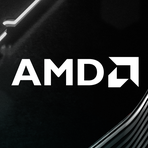The Semiconductor Tug-of-War: AMD's Balancing Act in a Shifting Landscape
May 9, 2025, 10:03 pm

Location: United States, California, San Francisco
Employees: 201-500
Founded date: 2012
Total raised: $329M

Location: United States, California, Cupertino
Employees: 10001+
Founded date: 1976
Total raised: $100M
In the world of technology, the semiconductor industry stands as a titan. It fuels everything from smartphones to supercomputers. At the helm of this ship is Advanced Micro Devices (AMD), led by CEO Lisa Su. Recently, she spotlighted a crucial player in this arena: China. Su sees China as a “large opportunity” for growth, especially in the semiconductor and artificial intelligence sectors. However, this opportunity comes with a caveat—a tightening grip of U.S. export controls.
The semiconductor market is a chessboard, and every move counts. The U.S. government has tightened its grip on chip shipments to China, aiming to curb the flow of advanced technology that could bolster military capabilities. This is a double-edged sword. On one side, it protects national security. On the other, it risks stifling innovation and economic growth. Su advocates for a balance. She believes that while export controls are necessary, they should not hinder the adoption of technology that can drive economic growth and create jobs in the U.S.
AMD recently reported its fiscal first-quarter results, showcasing a company that is navigating these turbulent waters with agility. Despite the looming $1.5 billion hit from export controls, AMD exceeded earnings expectations. The company is not just surviving; it’s thriving. Su emphasized the importance of U.S. leadership in artificial intelligence. This leadership is not just a goal; it’s a necessity for maintaining a competitive edge in a rapidly evolving market.
The semiconductor industry is akin to a river, constantly flowing and changing course. AMD is adapting to these changes. Su noted that the company is working to shift manufacturing back to the U.S. This move is strategic. It not only mitigates risks associated with tariffs but also aligns with a broader trend of reshoring manufacturing. The goal is clear: maintain robust sales while navigating the complexities of international trade.
As AMD maneuvers through these challenges, it faces competition from other giants in the field. Nvidia, another key player in the AI chip market, has voiced concerns about the impact of export restrictions. The stakes are high. Losing access to the Chinese market could mean missing out on significant growth opportunities. The semiconductor industry is not just about chips; it’s about the future of technology.
Meanwhile, Lyft is making waves in the ridesharing sector. The company recently announced a $750 million share buyback plan, sending its stock soaring. This move reflects confidence in its business model, even as it grapples with the aftermath of a turbulent market debut. Lyft reported a modest profit, a stark contrast to its previous losses. The company is not just riding the wave; it’s carving its path.
Lyft’s growth story is compelling. The company reported a 14% increase in revenue, driven by a surge in rides. Active riders are on the rise, and gross bookings are exceeding expectations. This momentum is crucial for Lyft as it seeks to regain its footing in a competitive landscape. The ridesharing market is a battleground, and Lyft is positioning itself for sustained growth.
CEO David Risher highlighted the company’s expansion into new demographics and markets. The acquisition of the German taxi app FreeNow is a strategic move aimed at broadening its reach in Europe. This expansion is not just about numbers; it’s about establishing a foothold in a lucrative market. Lyft is not merely reacting to market conditions; it’s proactively shaping its future.
Both AMD and Lyft are navigating complex landscapes, but their strategies differ. AMD is focused on balancing national security with technological advancement. Lyft is laser-focused on growth and market expansion. Yet, both companies share a common thread: the need for agility in a rapidly changing environment.
The semiconductor industry is at a crossroads. The U.S. government’s export controls are reshaping the landscape, forcing companies to adapt. AMD’s approach is a testament to resilience. The company is not just reacting to challenges; it’s seizing opportunities. The balance between security and innovation is delicate, but it’s one that AMD is willing to navigate.
In the ridesharing sector, Lyft is carving out its niche. The company’s recent financial performance is a beacon of hope. It shows that even in a challenging market, growth is possible. Lyft’s focus on expansion and innovation is a strategy that could pay off in the long run.
As we look to the future, the semiconductor and ridesharing industries will continue to evolve. Companies like AMD and Lyft will play pivotal roles in shaping these sectors. The road ahead may be fraught with challenges, but it is also filled with opportunities. The key will be adaptability. In a world where change is the only constant, those who can pivot and innovate will emerge victorious.
In conclusion, the semiconductor industry is a high-stakes game, and AMD is playing to win. Meanwhile, Lyft is proving that resilience and strategic expansion can lead to success. Both companies are navigating their unique challenges, but their commitment to growth and innovation will define their futures. The landscape may shift, but the drive for progress remains unwavering.
The semiconductor market is a chessboard, and every move counts. The U.S. government has tightened its grip on chip shipments to China, aiming to curb the flow of advanced technology that could bolster military capabilities. This is a double-edged sword. On one side, it protects national security. On the other, it risks stifling innovation and economic growth. Su advocates for a balance. She believes that while export controls are necessary, they should not hinder the adoption of technology that can drive economic growth and create jobs in the U.S.
AMD recently reported its fiscal first-quarter results, showcasing a company that is navigating these turbulent waters with agility. Despite the looming $1.5 billion hit from export controls, AMD exceeded earnings expectations. The company is not just surviving; it’s thriving. Su emphasized the importance of U.S. leadership in artificial intelligence. This leadership is not just a goal; it’s a necessity for maintaining a competitive edge in a rapidly evolving market.
The semiconductor industry is akin to a river, constantly flowing and changing course. AMD is adapting to these changes. Su noted that the company is working to shift manufacturing back to the U.S. This move is strategic. It not only mitigates risks associated with tariffs but also aligns with a broader trend of reshoring manufacturing. The goal is clear: maintain robust sales while navigating the complexities of international trade.
As AMD maneuvers through these challenges, it faces competition from other giants in the field. Nvidia, another key player in the AI chip market, has voiced concerns about the impact of export restrictions. The stakes are high. Losing access to the Chinese market could mean missing out on significant growth opportunities. The semiconductor industry is not just about chips; it’s about the future of technology.
Meanwhile, Lyft is making waves in the ridesharing sector. The company recently announced a $750 million share buyback plan, sending its stock soaring. This move reflects confidence in its business model, even as it grapples with the aftermath of a turbulent market debut. Lyft reported a modest profit, a stark contrast to its previous losses. The company is not just riding the wave; it’s carving its path.
Lyft’s growth story is compelling. The company reported a 14% increase in revenue, driven by a surge in rides. Active riders are on the rise, and gross bookings are exceeding expectations. This momentum is crucial for Lyft as it seeks to regain its footing in a competitive landscape. The ridesharing market is a battleground, and Lyft is positioning itself for sustained growth.
CEO David Risher highlighted the company’s expansion into new demographics and markets. The acquisition of the German taxi app FreeNow is a strategic move aimed at broadening its reach in Europe. This expansion is not just about numbers; it’s about establishing a foothold in a lucrative market. Lyft is not merely reacting to market conditions; it’s proactively shaping its future.
Both AMD and Lyft are navigating complex landscapes, but their strategies differ. AMD is focused on balancing national security with technological advancement. Lyft is laser-focused on growth and market expansion. Yet, both companies share a common thread: the need for agility in a rapidly changing environment.
The semiconductor industry is at a crossroads. The U.S. government’s export controls are reshaping the landscape, forcing companies to adapt. AMD’s approach is a testament to resilience. The company is not just reacting to challenges; it’s seizing opportunities. The balance between security and innovation is delicate, but it’s one that AMD is willing to navigate.
In the ridesharing sector, Lyft is carving out its niche. The company’s recent financial performance is a beacon of hope. It shows that even in a challenging market, growth is possible. Lyft’s focus on expansion and innovation is a strategy that could pay off in the long run.
As we look to the future, the semiconductor and ridesharing industries will continue to evolve. Companies like AMD and Lyft will play pivotal roles in shaping these sectors. The road ahead may be fraught with challenges, but it is also filled with opportunities. The key will be adaptability. In a world where change is the only constant, those who can pivot and innovate will emerge victorious.
In conclusion, the semiconductor industry is a high-stakes game, and AMD is playing to win. Meanwhile, Lyft is proving that resilience and strategic expansion can lead to success. Both companies are navigating their unique challenges, but their commitment to growth and innovation will define their futures. The landscape may shift, but the drive for progress remains unwavering.

